RPC Purification Options and Scale up with SOURCE™ Media
SOURCE™ media are based on a matrix made from monodispersed, rigid, polystyrene/divinyl benzene (Figure 1). The media demonstrate extreme chemical and physical stability and, unlike silica-based media, can be used at extremes of pH. A range of particle sizes (30 μm, 15 μm or 5 μm) enables SOURCE™ RPC to be used from large-scale purification through to high-resolution analysis. The uniformity and stability of SOURCE™ particles ensure high flow rates at low back pressure. Such high flow rates are useful for speeding up cleaning and re-equilibration steps. Flow rates are more likely to be limited by the equipment available and the eluents used rather than the physical properties of the media.
- Use SOURCE™ RPC media for purification and analysis of proteins, peptides, and oligonucleotides.
- Use SOURCE™ RPC as an alternative to silica-based matrices when separations must be performed above pH 8 or when requiring different selectivity or higher capacity.
- Use SOURCE™ 30RPC for polishing stages of industrial processes requiring high flow rate and low back pressure.
- Use SOURCE™ 15RPC for polishing steps in laboratory or large-scale applications that require highest resolution and fast separation (flows up to 1800 cm/h).
- Use SOURCE™ 5RPC for highest-resolution, analytical separations as required for peptide mapping and LC-MS techniques.
- Run SOURCE™ RPC columns on systems such as ÄKTAdesign™, FPLC System, and HPLC. Appendix 3 gives guidance on how to select the most suitable ÄKTAdesign™ system.
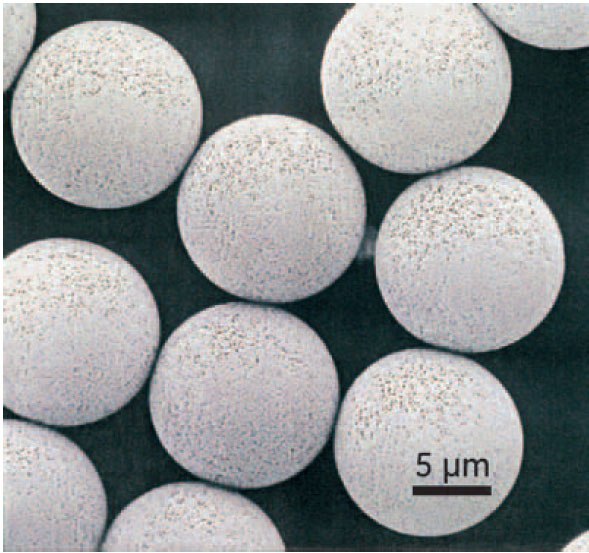
Figure 1.Scanning electron micrograph of SOURCE™ 15RPC shows the uniform size distribution.
Purification options
*Determined at 10% breakthrough by frontal analysis. The dynamic binding capacity of an RPC medium is dependent on several parameters including the properties of the target molecule, the selectivity and pore size of the medium, eluent conditions and flow rate.
Capacities given here were determined using 0.1% TFA at a flow rate of 300 cm/h.
‡ Maximum operating back pressure refers to the pressure above which the medium begins to compress.
- In RPC many parameters, such as properties of the protein, flow rates, and selectivity of the medium play a significant role in the determination of binding capacity. Final capacity must be determined by experimentation.
- Use RESOURCE™ RPC 1 mL for rapid screening and method development. Transfer RESOURCE™ RPC 3 mL column for higher resolution and method development on a 10 cm bed height.
- Use SOURCE™ 5RPC columns for highest resolution as required, for example, for peptide mapping.
Select a production column such as FineLINE for larger volumes.
Purification examples
Capture and Purification of a Synthetic Peptide
See an example of the purification and mass spectrometric analysis of a crude mixture of synthetic amyloid-β 1–42 (Figure 2). This peptide is generated from a large transmembrane precursor protein by proteolytic cleavage and may polymerize to form rigid, linear, non-branching fibrils building up to the senile plaques that represent one of the characteristics of Alzheimer's disease. Amyloid-β 1–42 was synthesized for use in studies of the mechanisms underlying fibril formation. However, while readily soluble under alkaline conditions, the peptide is virtually insoluble under conditions so that traditional purification by RPC at low pH cannot be used. The wide pH stability of SOURCE™ media is therefore well suited for such a purification challenge.
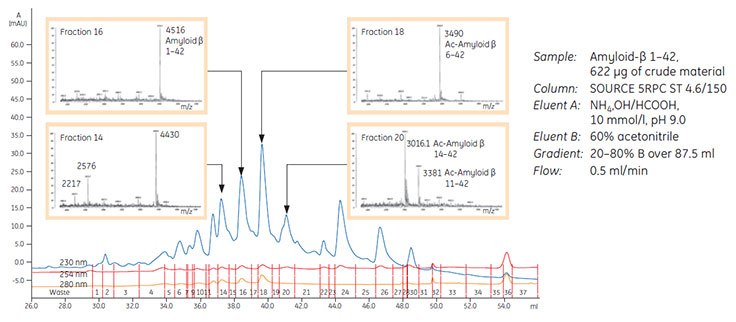
Figure 2.Purification and MS analysis of a synthetic peptide.
Purification at high pH
The successful purification of beta-lipotropin fragment 1–10 (MW 950, Sigma) is achieved by using high pH conditions (pH 12), possible only on polymer-based media. At pH 2 the contaminants are eluted in the beta-lipotropin peak (Figure 3).
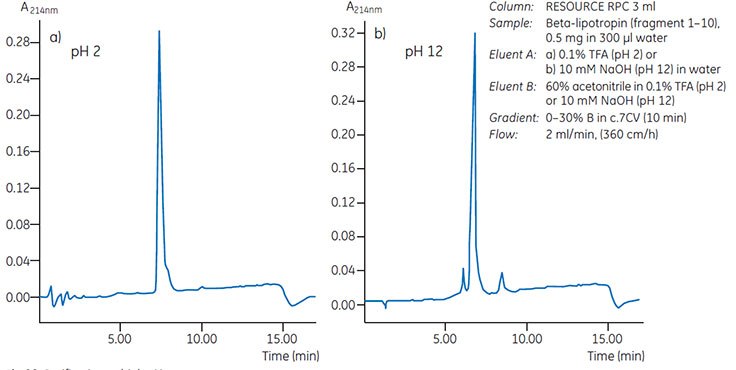
Figure 3.Purification at high pH.
Polishing step and scale-up
The graph below illustrates the high-resolution preparative separation of recombinant human epidermal growth factor (EGF) expressed in yeast (Figure 3). Most impurities have been removed by an initial hydrophobic interaction chromatography step on Phenyl Sepharose 6 Fast Flow (high sub) followed by ion exchange on Q Sepharose High Performance. The final polishing step on SOURCE™ 15RPC was optimized on a RESOURCE™ 3 mL column before scale-up to a pilot-scale column.
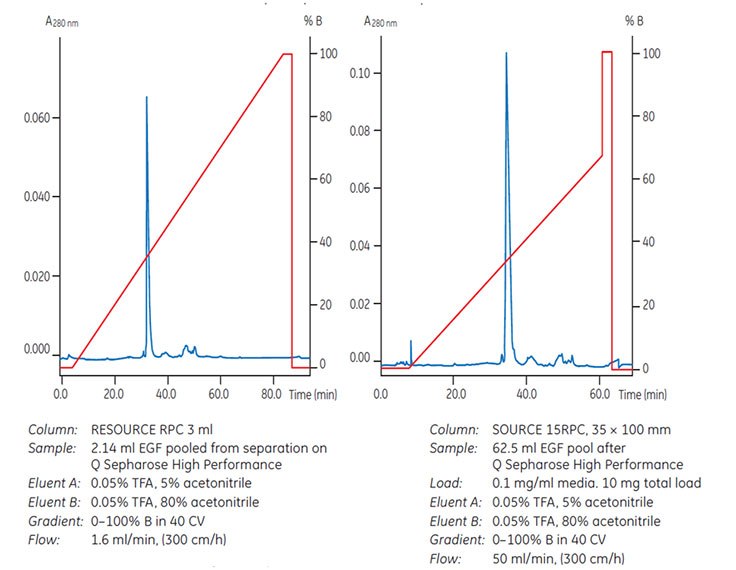
Figure 3.Preparative separation of a recombinant protein.
Scaling up
SOURCE™ 30RPC has excellent scalability (Figure 4). The medium is easily packed and maintains its performance during scale-up. In this example, the separation of a model protein mixture was scaled up by a factor of 400 from a 24 mL column to a 10 liter FineLINE 200L column.
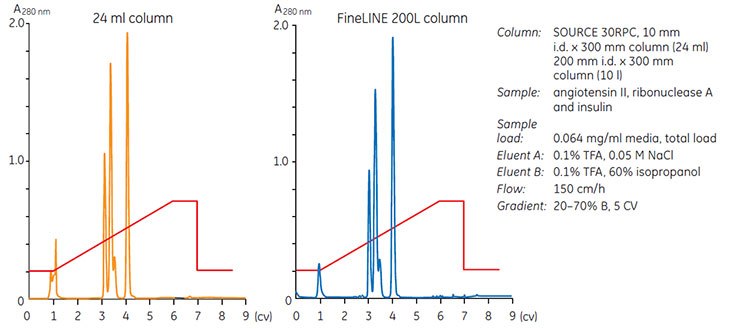
Figure 4.Scalability of SOURCE™ 30RPC.
Materials
如要继续阅读,请登录或创建帐户。
暂无帐户?